
Explore the evolution of motorcar excellence from 1945 to 1995 with a captivating journey through some of the sleekest ever created. From iconic classics like the Jeep Willys MB and Chevrolet Corvette to legendary supercars like the Ferrari Testarossa and McLaren F1, these vehicles epitomize innovation, style, and competence.
1945: Jeep Willys MB

Initially designed for military use during World War II, the Jeep Willys MB symbolized rugged durability and off-road capability. Its impressive build and powerhouse made it a favorite among soldiers, who appreciated its ability to traverse challenging terrains easily.
1946: Chevrolet Suburban

Suburbans laid the foundation for modern SUVs, known for spacious interiors and versatile designs. Its ample seating and towing capabilities make it the go-to choice for families and businesses, offering unmatched utility and comfort. Over the years, the Suburban evolved to meet the changing needs of consumers, but its reputation for reliability and practicality remained steadfast, solidifying its place as an enduring American icon.
1947: Ferrari 125 S

The Ferrari 125 S began Enzo Ferrari’s fabulous empire, showcasing the brand’s commitment to efficacy and luxury. Along with its sleek silhouette and robust engine, the 125 S set new standards for speed and handling on the racing circuit, earning Ferrari its first victory in its debut race.
1948: Porsche 356

Born out of founder Ferdinand Porsche’s passion for engineering excellence, the 356 combined delivery and practicality, making it equally adept on the track and the open road. Its timeless design and elegant chassis attracted a devoted following of driving fans, establishing Porsche as a dominant force in sports car manufacturing.
1949: Cadillac Series 62

As a symbol of prosperity and success, the Series 62 became the car of choice for affluent buyers seeking the ultimate in machine opulence. Its smooth ride and state-of-the-art amenities represented the pinnacle of American automotive engineering, setting the standard for luxury vehicles for decades.
1950: Jaguar XK120

Thanks to its breathtaking look and impressive operation, this automobile stunned the world, becoming an instant favorite among sports car enthusiasts. Its sleek, aerodynamic frame was complemented by a powerful inline-six powertrain, delivering exhilarating acceleration and top speeds unmatched in its era.
1951: Chrysler New Yorker

Its spacious interior and plush amenities catered to discerning buyers seeking comfort and refinement, while its incredible engine lineup provided unprecedented acceleration and effortless cruising capabilities. With its commanding presence and attention to detail, the New Yorker epitomized the luxury and prestige of the Chrysler brand.
1952: Mercedes-Benz 300 SL

The Mercedes-Benz 300 SL’s stylish gullwing doors and race-inspired engineering set new sports car design and efficacy standards. Its advanced fuel-injected powerhouse delivered impressive power and torque, propelling the 300 SL to victory at the 24 Hours of Le Mans.
1953: Chevrolet Corvette
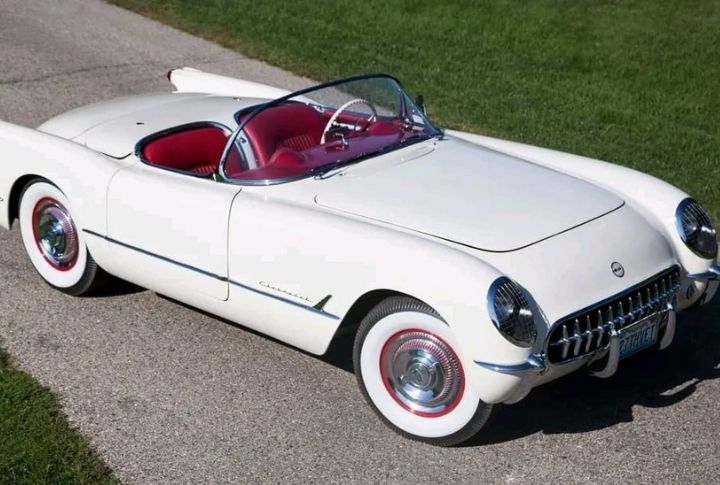
This icon debuted as America’s first actual sports car, capturing the hearts of drivers thanks to its sleek presentation and fierce V8 powerhouse. Its fiberglass construction was a revolutionary departure from the traditional steel constitution, allowing for greater agility and operation on the asphalt. Thanks to its unmistakable DNA and thrilling delivery, the Corvette quickly became a symbol of American motorcar ingenuity and remains an enduring icon of the Chevrolet brand.
1954: Ford Thunderbird

The “T-Bird” blended style and competence through several innovative features, including power windows, a removable hardtop, and a powerful V8. The car’s emphasis on comfort and convenience appealed to a new generation of buyers seeking a combination of sportiness and luxury, solidifying its status as a legend in American automobile history.
1955: Mercedes-Benz 190SL
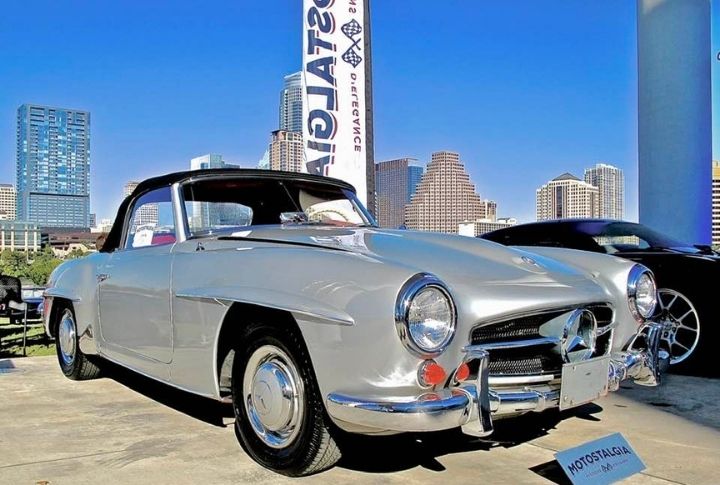
There’s a good reason why this Benz is a favorite among discerning drivers of the era. The 190SL’s luxurious interior was reminiscent of its larger sibling, the 300 SL, while its smooth inline-four motor provided ample power for spirited driving.
1956: BMW 507
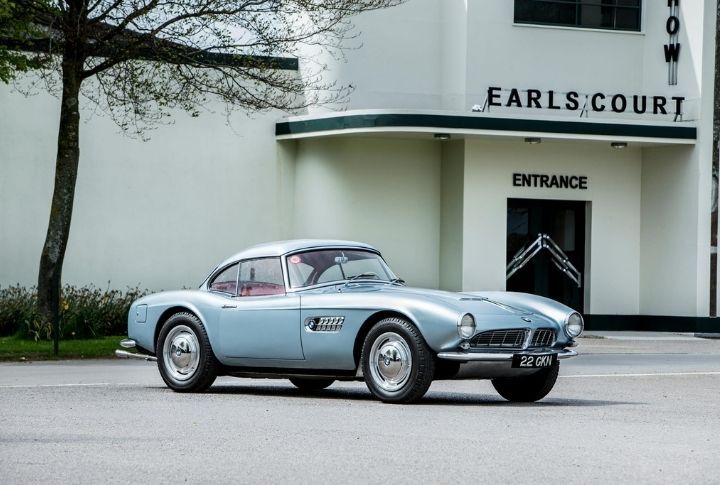
This popular automobile combined exemplary roadster styling and BMW’s renowned engineering prowess, earning praise for its functioning and exclusivity. Conceptualized by famed industrial designer Albrecht Graf Goertz, the 507 featured transient lines and exquisite detailing, making it a standout in the crowded sports car market. Its dominant V8 and featherweight construction delivered compelling performances.
1957: Chevrolet Bel Air
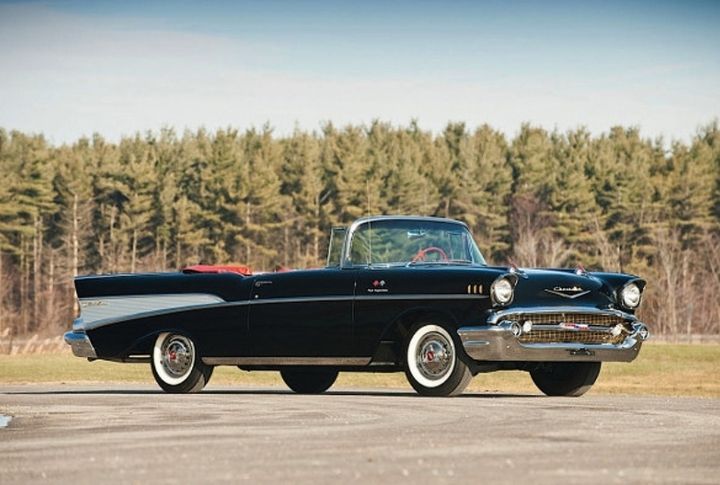
As the name suggests, this epitomizes the flamboyant style and chrome-laden excess of the 1950s. The Bel Air’s sweeping lines, distinctive grille, and iconic tail fins captured the imagination of a generation, reflecting the optimism and prosperity of post-war America.
1958: Aston Martin DB4

The Aston Martin DB4 combined British craftsmanship and Italian flair, delivering unbeatable efficacy and luxurious comfort. Crafted by skilled artisans at Aston Martin’s Newport Pagnell factory, the DB4’s svelte silhouette and hand-built interior exuded sophistication and refinement.
1959: Mini Cooper
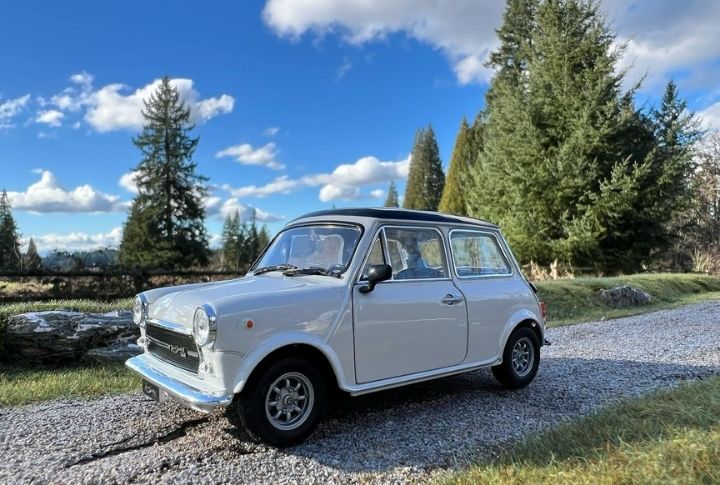
Conjured up as a response to post-war Europe’s fuel shortages and urban congestion, the Mini Cooper’s innovative transverse engine layout and space-saving construction maximized interior space while minimizing its footprint on the asphalt. Its go-kart-like handling and playful personality endeared it to drivers of all ages, from city commuters to rally champions.
1960: Ford Falcon

This creation pioneered the compact car segment in America, offering practicality and fuel efficiency without sacrificing style or function. The Falcon’s clean lines and understated elegance appealed to buyers looking for a more economical alternative to larger, gas-guzzling vehicles.
1961: Jaguar E-Type

Hailed as the most beautiful car ever built, this beauty combined stunning looks and blistering delivery, setting a new benchmark for sports rides. Designed by aerodynamicist Malcolm Sayer, the E-Type’s sleek, aerodynamic bodywork was inspired by Jaguar’s dominant D-Type race car, giving it an unmistakable presence on the road. Meanwhile, the impressive inline-six powertrain propelled the E-Type to speeds that left rivals in its wake.
1962: Shelby Cobra

The Shelby collaboration between Carroll Shelby and AC Cars unleashed unprecedented performance because of its Ford V8 engine and lightweight chassis. Born out of Shelby’s desire to create a formidable competitor for its rivals, the Cobra’s combination of Uncle Sam’s muscle and British craftsmanship made it a force to be reckoned with on both the highway and track.
1963: Porsche 911

Conceptualized by Ferdinand “Butzi” Porsche, the 911’s iconic silhouette and air-cooled flat-six mechanism captured the essence of Porsche’s engineering philosophy. Its perfect balance and responsive wheel meant it was equally adept at carving through winding mountain paths and tearing down the straightaways of racetracks worldwide.
1964: Ford Mustang

Introduced as a stylish and accessible alternative to European machines, the Mustang’s sleek lines and potent V8 engine appealed to a new generation of car lovers. Its innovative marketing campaign and wide range of trim levels and options allowed buyers to tailor their Mustang to suit their tastes and preferences. The Mustang has left an indelible mark on American motorcar history, from its debut at the 1964 World’s Fair to its prominent role in countless films and television shows.
1965: Chevrolet Impala SS

The Impala SS embodies Chevrolet’s performance heritage with its aggressive stance, muscular lines, and powerful powertrain options. Its plush interior and smooth ride were equally suited for cruising the boulevard or tearing down the drag strip, appealing to an array of buyers seeking style and substance.
1966: Lamborghini Miura

The Miura was a radical departure from traditional sports car design that Lamborghini engineers conceived in their spare time. It featured a transversely mounted V12 engine and a sleek, aerodynamic frame. From its iconic “eyelashes” to its booming exhaust note, every aspect of the locomotive captivated the auto world, making it one of its era’s most desirable and sought-after rides.
1967: Toyota 2000GT

Despite its limited production numbers, Japan’s first supercar stunned the motor world due to its sultry frame and stunning stats. Developed in collaboration with Yamaha, the 2000GT featured a low-slung body, pop-up headlights, and a noteworthy inline-six contraption. Its excellent efficacy on the track and elegant framing drew comparisons to European sports cars costing several times as much.
1968: Dodge Charger

From its menacing grille to its sleek fastback roofline, the Charger exuded aggression and attitude, making it a favorite among fanatics and street racers. Its range of potent V8 engines and muscular stance ensured the Charger was as formidable on the drag strip as on the open pathway.
1969: Chevrolet Camaro

In addition to offering competent performance and aggressive presentation, the Chevrolet Camaro was introduced as a direct competitor to Ford Mustangs. Its iconic presence on the road symbolized the fierce rivalry between American muscle machines of the era, solidifying its status as a timeless classic and a symbol of automotive endurance and innovation.
1970: Plymouth Barracuda

The Barracuda had options ranging from the famed Hemi engine to the powerful 440 Six Pack, making it a colossus, dominating the competition in acceleration and top speed. Its aggressive stance and menacing growl signaled to onlookers that this was not just a car but a symbol of power, speed, and American ingenuity.
1971: De Tomaso Pantera

Designed by Ghia and powered by a Ford Cleveland V8 engine, the Pantera blended breathtaking styling with raw power, delivering a noteworthy driving experience that rivaled more expensive European exotics. Its marriage of Italian flair and American muscle presented it as a standout in the supercar landscape, capturing the imagination of fans worldwide and solidifying its place in automobile history.
1972: BMW 2002 Turbo

As one of the first turbocharged production rides, the BMW 2002 Turbo offered compelling experiences and agility in a compact package, earning it a cult following among petrolheads. Its aggressive styling cues, including flared wheel arches and bold graphics, hinted at its potential, while its minimal build and balanced chassis made it a joy to drive.
1973: Porsche 911 Carrera RS

The Porsche 911 Carrera RS, a homologation special for racing, was purpose-built for the track, dominating racing circuits worldwide. Its stylish “ducktail” rear spoiler and wider fender flares improved aerodynamics and gave the Carrera RS a menacing presence on the road. As a limited-production model, the Carrera RS is highly sought after by collectors today, symbolizing the pinnacle of Porsche’s engineering prowess and motorsport heritage.
1974: Volkswagen Golf GTI

The Volkswagen Golf GTI pioneered the hot hatch segment, combining practicality, sporty delivery, and lithe handling, setting the standard for affordable performance mobiles. Its no-nonsense 1.6-liter powertrain, light body, sporty interior, and svelte red accents signaled to petrolheads that this was no ordinary compact car. The Golf GTI’s winning combination of competence, practicality, and affordability fancied drivers worldwide, establishing it as a true icon of the industry.
1975: Ferrari 308 GTB

Made famous by its appearance in the television series “Magnum, PI,” the 308 highlighted Ferrari’s racing pedigree in a road-going package. Thanks to its sleek Pininfarina-designed architecture and mid-mounted V8 contrivance, the 308 GTB delivered blistering acceleration and a precise feel that echoed its racing heritage.
1976: Lotus Esprit

The Lotus Esprit combined striking looks with responsive handling and potent powertrain, earning a place in pop culture as James Bond’s car in “The Spy Who Loved Me.” Its wedge-shaped body and mid-mounted engine gave it a distinctive profile that turned heads wherever it went. At the same time, its featherweight frame and finely tuned suspension delivered exhilarating performance on various terrains.
1977: Pontiac Firebird Trans Am

As a symbol of freedom and rebellion, the Firebird Trans Am captured the spirit of the 1970s and remains a beloved pick among automobile enthusiasts. Applauding its menacing hood scoops, bold graphics, and signature “screaming chicken” decal, the Trans Am exuded an aura of efficacy and attitude that tickled drivers seeking excitement and adventure.
1978: Datsun 280Z

Its lively inline-six driver and responsiveness made driving on twisty back alleys or spirited highway cruising a joy. At the same time, its comfortable interior and refined ride quality ensured long-distance comfort for drivers and passengers alike. As a symbol of Japanese engineering prowess, the 280Z helped establish Datsun as a serious contender in the sports car market.
1979: Mercedes-Benz G-Class

The Mercedes-Benz G-Class offered rugged off-road capability and luxurious comfort, becoming a status symbol for celebrities and adventurers. Considering its boxy, utilitarian design and resilient construction, the G-Class was built to tackle the most challenging terrain easily, earning it a reputation as one of the most competent, gritty vehicles ever produced.
1980: Audi Quattro

Showcasing Audi’s engineering prowess on the world stage, the Audi Quattro revolutionized rallying through its innovative all-wheel-drive system, offering unmatched traction and performance on any surface. Because of its turbocharged five-cylinder magic and advanced four-wheel-drive system, the Quattro dominated rally circuits around the globe, winning numerous championships and solidifying Audi’s reputation as a force to be reckoned with in motorsport.
1981: DeLorean DMC-12

The DeLorean DMC-12, immortalized by its role in the “Back to the Future” film franchise, offered futuristic styling and unique gullwing doors, capturing the imagination of car lovers worldwide. Conceived by automobile visionary John DeLorean, the DMC-12 featured a stainless steel body and distinctive, stylish elements that set it apart from the crowd.
1982: Chevrolet Camaro Z28

Whether tearing up the drag strip or carving corners on the racetrack, the Camaro Z28 was a proper workhorse. It symbolized the spirit of American muscle car culture and left a lasting impression on drivers everywhere. Due to its high-revving small-block V8 engine, it delivered thrilling acceleration and a thunderous exhaust note that excited anyone who had the privilege of driving it.
1983: Porsche 944

The Porsche 944 combined Porsche’s renowned engineering with practicality and affordability, offering thrilling experiences due to its impeccable steering in a stylish package. Considering its refined interior, balanced chassis, amaranthine look, and serious inline-four powertrain, the 944 represented the perfect marriage of competence and usability, cementing its status as an exemplary Porsche model cherished by collectors and drivers worldwide.
1984: Ferrari Testarossa

The Ferrari Testarossa epitomized motorcar excess and became a symbol of 1980s supercar culture with its iconic wedge-shaped design and powerful flat-twelve contrivance. Its wide rear stance, pop-up headlights, and brazen side strakes captured the attention of eccentrics and onlookers alike, earning it a place in the pantheon of legends.
1985: Toyota MR2

As one of Toyota’s most beloved models, the MR2 left an indelible mark on the petrol scene, inspiring future generations of sports cars. Crediting its eye-catching presentation and practical hatchback architecture, the MR2 appealed to many buyers seeking a balance of function and everyday usability. While it has compact dimensions and a peppy engine, its lightweight physique makes it a pleasure to drive on twisting terrain due to its precise steering and light frame.
1986: Ford RS200

The Ford RS200, a Group B rally homologation special, featured advanced four-wheel-drive technology and blistering performance, making it one of the most coveted rides of its time. From the aggressive aerodynamics to the purpose-built interior, the RS200 was a formidable competitor on the track and a prized collector possession.
1987: Buick GNX

Considering this mobile’s turbocharged V6 powertrain and menacing blacked-out design, the GNX offered muscle car grit with a stealthy demeanor. Its understated appearance belied its ferocious capabilities, with the GNX capable of outpacing much more expensive sports mobiles of its era. Because of its limited production run and mythical performance figures, the GNX quickly became a collector’s item, commanding premium prices on the used market.
1988: Lamborghini Countach 25th Anniversary Edition

In the 1980s, the Lamborghini Countach 25th Anniversary Edition represented the height of automotive excess with its outrageous styling and shocking numbers. Its angular blueprint, scissor doors, and massive rear wing made it an instant icon, while its mid-mounted V12 powerhouse delivered earth-shattering acceleration and top speed. Despite its impracticalities and challenging driving dynamics, the Countach captured the imagination of enthusiasts worldwide, symbolizing the ultimate expression of opulence.
1989: Mazda MX-5 Miata

This car is responsible for reviving the classic roadster formula for a new generation, offering breezy architecture, precise handling, and timeless essence at an affordable price. Inspired by renowned British sports cars of the 1960s, the MX-5 captured the essence of open-air motoring with its simple yet elegant look and engaging driving dynamics.
1990: Nissan Skyline GT-R (R32)

The Nissan Skyline GT-R (R32) redefined the performance sedan because of its advanced all-wheel-drive system and potent twin-turbo inline-six powertrain. Its combination of groundbreaking technology and exhilarating stats made it a formidable competitor on the track, while its practicality and reliability made it a favorite for daily driving duties.
1991: Acura NSX

From its lightweight aluminum body to the mid-mounted V6 engine and precision, the NSX set new benchmarks for sports cars of its time, challenging the dominance of established European marques. Beyond its functioning capabilities, the NSX’s comfortable interior and everyday usability made it a supercar that could be enjoyed daily, further solidifying its status as a game-changer in the driving world.
1992: Dodge Viper RT/10

This car became an instant icon of automotive excellence thanks to its raw V10 power and minimalist bodywork. Its brute force and no-nonsense approach to driving appealed to purists seeking unadulterated driving thrills, while its aggressive form turned heads wherever it went. Despite its lack of creature comforts and safety features, the Viper RT/10’s unapologetic focus on function endeared it to a generation of drivers who craved the adrenaline rush of pure muscle behind the wheel.
1993: McLaren F1

The McLaren F1 redefined the supercar genre after unveiling its revolutionary carbon fiber construction, central driving position, and blistering top speed, setting new numbers and engineering excellence standards. Designed by a team led by Gordon Murray, the F1 represented the pinnacle of engineering at the time, with its naturally aspirated V12 powerhouse and aerodynamically optimized bodywork pushing the boundaries of what was thought possible in a road car.
1994: Toyota Supra MK IV

Its bulletproof inline-six powertrain, capable of taking on massive power upgrades, made it a favorite in the aftermarket tuning scene, where it achieved legendary status for its ability to produce astonishing horsepower figures. Even with an affordable price tag, the Supra MK IV’s sophisticated suspension and balanced chassis ensured pinpoint handling and breathtaking performance, making it a formidable competitor on the street and the drag strip.
1995: Ferrari F50

The Ferrari F50, with its Formula 1-inspired technology and exclusive production run, represented the pinnacle of Ferrari’s engineering prowess and became an instant hit among collectors and enthusiasts. Derived from Ferrari’s Formula 1 program, its naturally aspirated V12 powerhouse delivered spine-tingling moments and a symphony of mechanical sounds that thrilled drivers and spectators alike.
